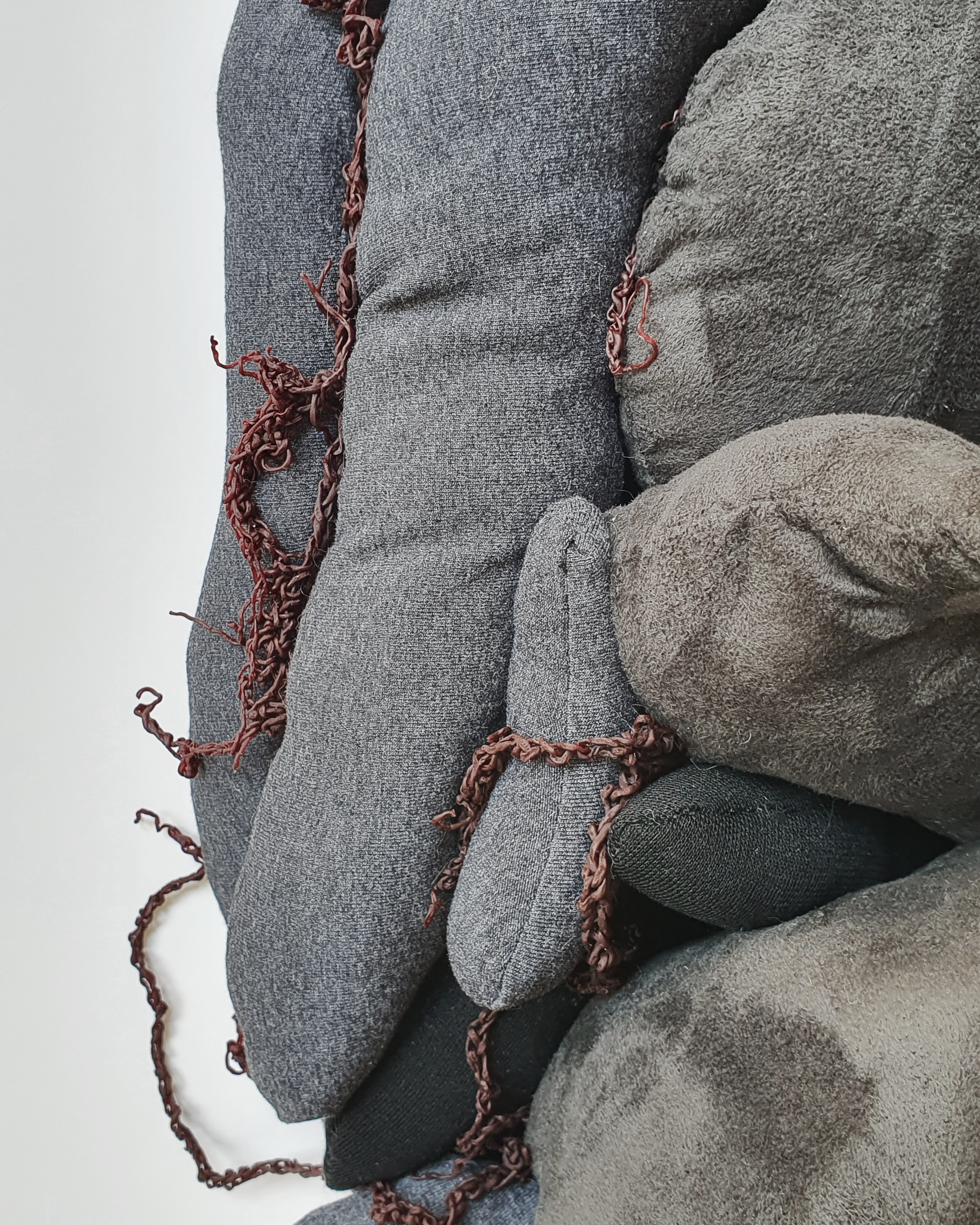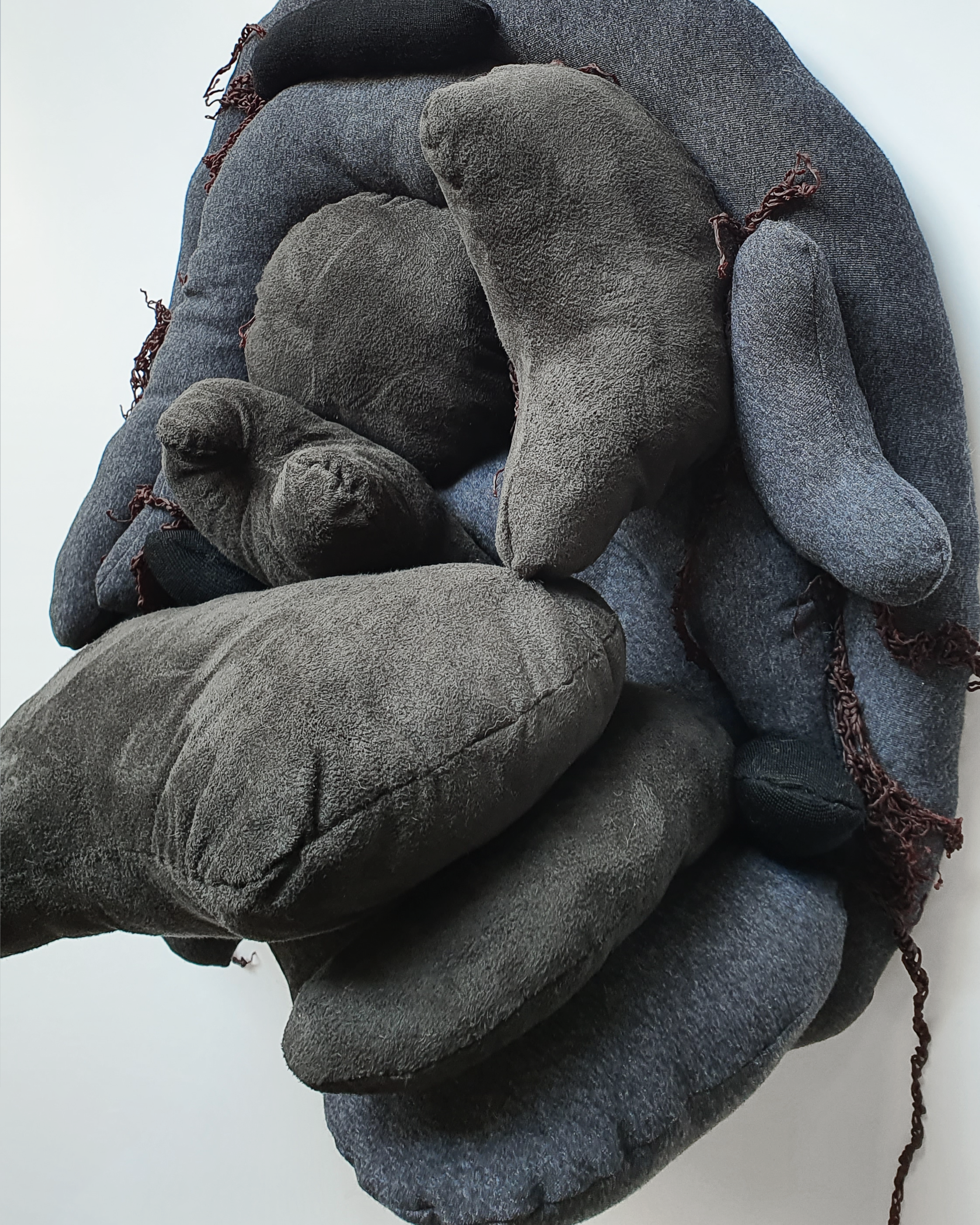Underbelly - October 2024Textile Sculpture - Recycled cloth, Velvet, Algae yarn, Beads, Polyfil
Techniques: Crochet, Sewing
54x40x24cm
Underbelly is a textile sculpture made from recycled cloth, velvet, and algae yarn - a visceral representation of the hidden and often silenced narratives surrounding Gender-Based Violence (GBV). Its visual presence is soft yet unsettling, using organic forms to represent the hidden narratives of GBV. Underbelly evokes the sense of exposing what lies beneath the surface—stories of abuse, coercion, and oppression that often remain unspoken or overlooked.
The piece combines the tactile familiarity of used fabrics with the roughness of knotted yarn to expose the unseen burdens carried by survivors of violence. The recycled cloth reflects sustainability, symbolizing the ongoing and cyclical nature of oppression, while the velvet— chosen for its ability to hold traces of touch—represents the emotional and psychological scars that violence leaves behind. The softness of the fabric contrasts with the heavy, twisted shapes that dominate the sculpture, suggesting a conflict between vulnerability and resistance. These amorphous forms are both protective and suffocating, capturing the tension many women experience as they navigate violent environments. Interwoven through the sculpture is algae yarn, a striking material choice that both binds and constricts the piece, symbolizing the entrapment felt by victims of coercive control and networks of violence. The dark, tangled yarn also represents the bloodshed that often accompanies GBV, a stark reminder of its brutal and life-threatening consequences. The yarn loops in and out of the larger shapes, connecting them like threads of trauma that weave through every aspect of life.
Underbelly is physically immersive, drawing the viewer in with its layers of folds and fabric that mimic bodily forms. These soft, rounded, almost intestinal shapes evoke a sense of internal struggle, as though the very core of the piece is hiding something painful beneath its surface. The velvety exterior invites touch, yet its unsettling form reminds us of the darkness lurking beneath. This physical duality reflects the difficult truths about GBV, which often remain hidden or unspoken in public discourse.
The sculpture’s muted, monochromatic color palette of dark greys and blacks enhances its somber, meditative tone. It represents the silent weight of GBV. Underbelly is a call to action. The layers of fabric can be seen as representing not only the women lost to femicide but also the many voices that have been silenced. As viewers confront the imposing yet tender nature of the sculpture, they are asked to participate in the larger fight for gender equality, remembering that only by confronting and unraveling these dark threads of violence can society begin to heal.




